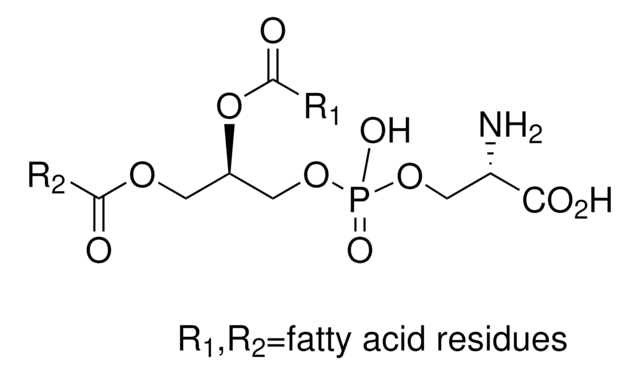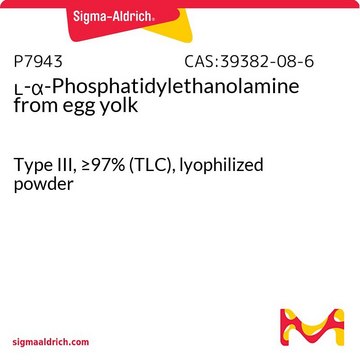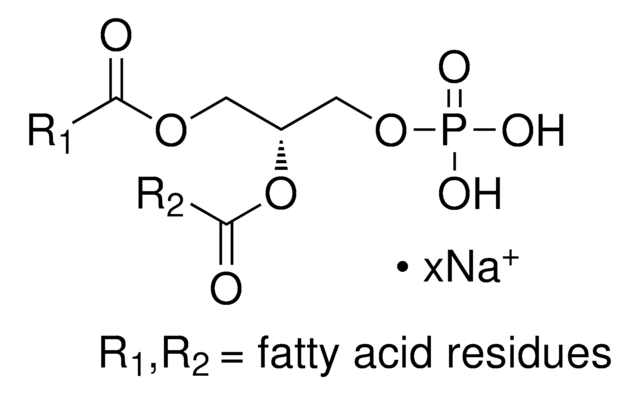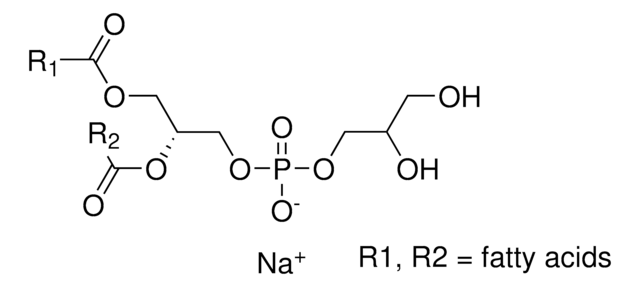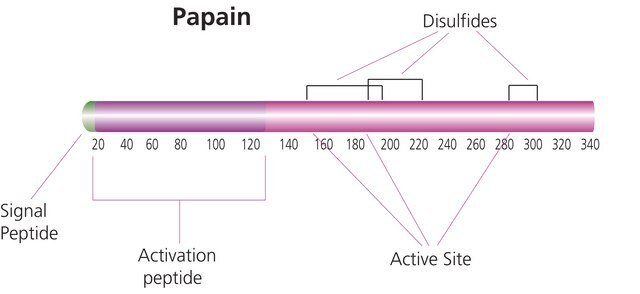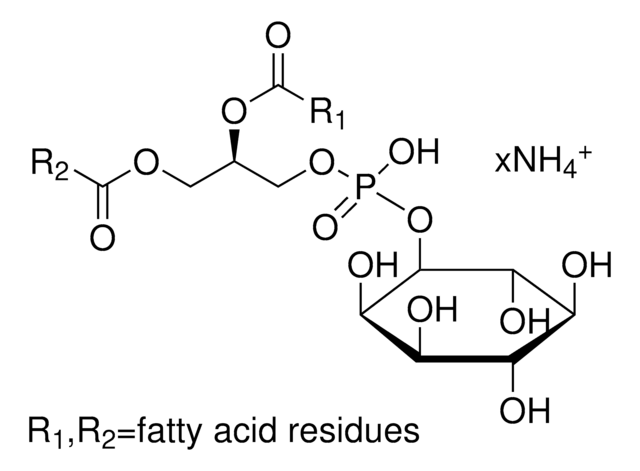P7769
1,2-Diacyl-sn-glycero-3-phospho-L-serine
from bovine brain, ≥97% (TLC), amorphous powder, structural phospholipid
Synonyme(s) :
3-sn-Phosphatidyl-L-serine, L-α-Phosphatidyl-L-serine, PS, Phosphatidylserine
About This Item
Produits recommandés
Nom du produit
1,2-Diacyl-sn-glycero-3-phospho-L-serine, ≥97% (TLC), from bovine brain, amorphous powder
Source biologique
bovine brain
Niveau de qualité
Essai
≥97% (TLC)
Forme
amorphous powder
Température de stockage
−20°C
Vous recherchez des produits similaires ? Visite Guide de comparaison des produits
Application
- as a lipid standard in time-of-flight secondary ion mass spectrometry (ToF-SIMS) spectral fingerprints
- as a reference standard in thin layer chromatography (TLC) for quantifying lipids from astrocyte-conditioned media (ACM) treated fibroblasts
- as a component of large unilamellar vesicles for annexin A2 aggregation studies
Actions biochimiques/physiologiques
Caractéristiques et avantages
Attention
Code de la classe de stockage
11 - Combustible Solids
Classe de danger pour l'eau (WGK)
WGK 3
Point d'éclair (°F)
Not applicable
Point d'éclair (°C)
Not applicable
Équipement de protection individuelle
Eyeshields, Gloves, type N95 (US)
Faites votre choix parmi les versions les plus récentes :
Déjà en possession de ce produit ?
Retrouvez la documentation relative aux produits que vous avez récemment achetés dans la Bibliothèque de documents.
Les clients ont également consulté
Notre équipe de scientifiques dispose d'une expérience dans tous les secteurs de la recherche, notamment en sciences de la vie, science des matériaux, synthèse chimique, chromatographie, analyse et dans de nombreux autres domaines..
Contacter notre Service technique